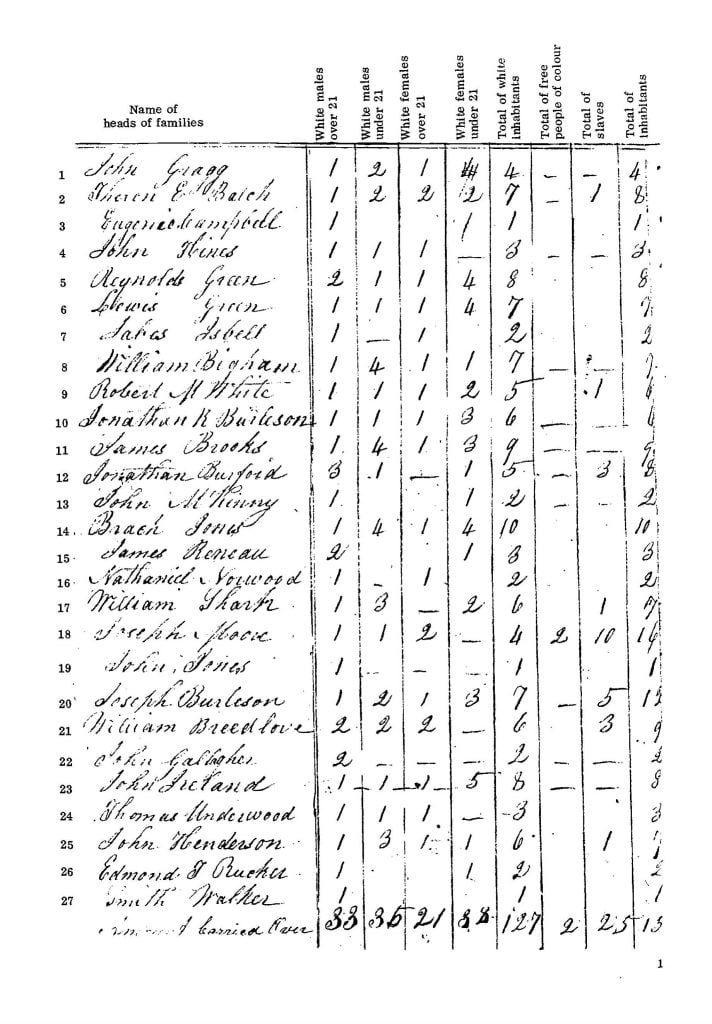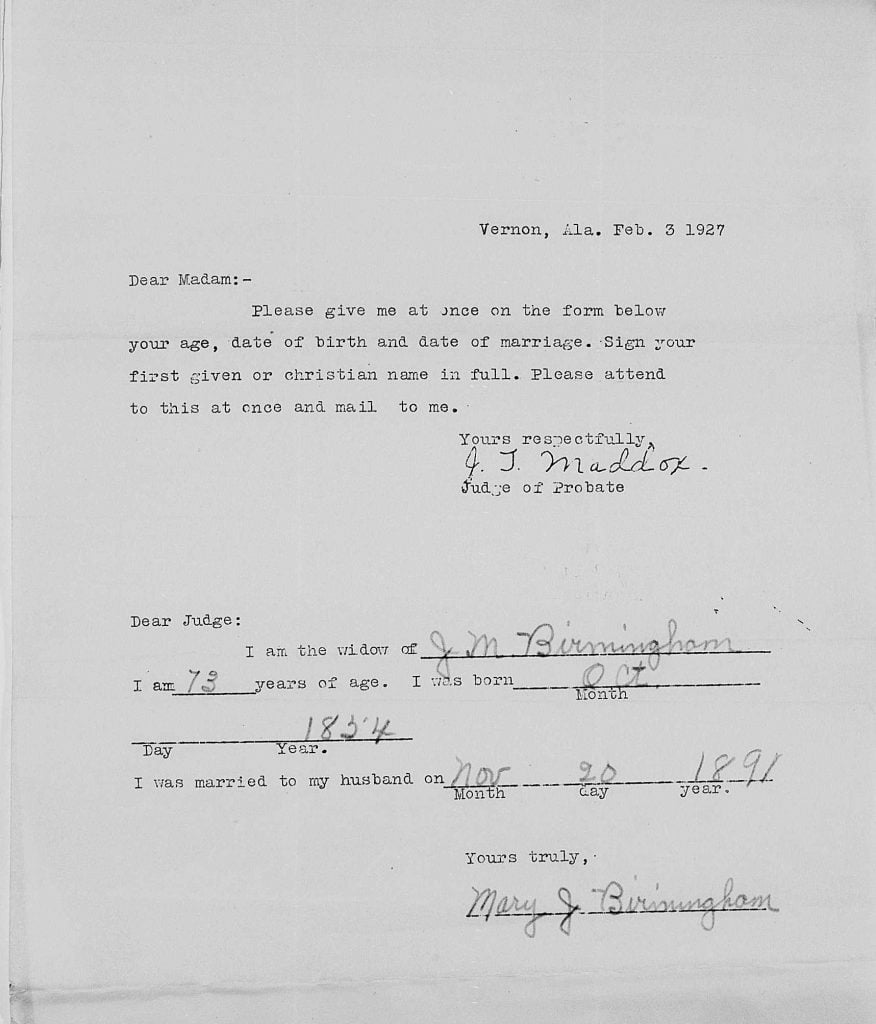Alabama’s early census records are limited in comparison to other states of the same age, but there are still several resources available for those looking to explore their family history in the state.
Despite some expected inaccuracies, census records are an essential source of personal history that can provide clues to other useful records such as court, land, military, immigration, naturalization, and vital records. They also remain important in cases where other records are missing or destroyed, as they can be used to document a person’s life for legal or insurance purposes. As new discoveries are made, census records should be revisited, as seemingly unrelated data may take on new importance.
Early French Census Records for Mobile
Early census records for 1706, 1721, and 1725 French settlements in or near Mobile, Alabama, have been published in the Deep South Genealogical Quarterly, but are not available online. For the 1706 census see Vol. 1, No. 1 (Aug 1963), p. 30; for the 1721 census see Vol 1, No. 3 (Mar 1964), p. 136-139; for the 1725 census see Vol. 1, No. 2 (Dec 1963) p. 86.
Early Spanish Census Records for Mobile
Mobile was a part of Spanish Florida in 1786 and under their control. The Spanish took a number of censuses during their periods of colonial control (1565-1763 and 1783-1821). The following is an extraction of the 1786 census for the area known as Mobile District.
Mississippi Territorial Census Records
Territorial censuses were conducted for various reasons, such as to petition for statehood, apportion the legislature, or for taxation purposes. These censuses were usually taken between federal censuses to determine the population of territories and whether there were enough citizens to apply for statehood. Alabama lands were a part of the Mississippi Territory from
1808 Mississippi Territorial Census
1810 Mississippi Territorial Census
1816 Mississippi Territorial Census
A census was taken in 1816, by authority of the general assembly in connection with the movement for statehood. In compiling this list tax lists were used for certain counties.
View the 1816 Census Images
Alabama Federal Census Records
Census records are highly valuable to genealogical researchers as they provide extensive information about individuals, families, and communities. The National Archives began microfilming federal census records in 1941, and with digitization and the Internet, they can now be easily accessed from home or a nearby library. Census records since 1850 contain data on birth dates and places, relationships, origins, occupations, and more, and can serve as a starting point for genealogical research, especially when an individual’s residence is unknown.
- 1820 Federal Census
The 1820 federal census returns were lost, but there are portions of the 1820 state census which have been digitized. See the state census section below to access them. - Free United States Census, 1830
- Free United States Census, 1840
- Free United States Census, 1850
- Free United States Census, 1860
- Free United States Census, 1870
- Free United States Census, 1880
- Free United States Census, 1890
The only extant records for Alabama in the 1890 census are parts of Perryville (Beat No. 11) and Severe (Beat No. 8) of Perry County. - Free United States Census, 1900
- Free United States Census, 1910
- Free United States Census, 1920
- Free United States Census, 1930
- Free United States Census, 1940
- Free United States Census, 1950
Alabama State Census Records
The State of Alabama conducted state censuses in the following years: 1818 (partial), 1820 (partial), 1821 (partial), 1823, 1850, 1855, 1866, and 1907. State censuses in Alabama were taken sporadically, with a sizable but incomplete collection available. The 1820 census is the earliest state census available for Alabama.
Alabama 1820 State Census Records
A state census was taken in 1820, although records exist for only nine counties, including Baldwin, Conecuh, Dallas, Franklin, Lawrence, Limestone, St. Clair, Shelby, and Wilcox. These records have been published and indexed. For the first eight see below, and then we’ll treat Lawrence County separately, as it’s a “special” case.
- Baldwin County AL 1820 Census – images 141-146
- Conecuh County AL 1820 Census – images 149-191
- Dallas County AL 1820 Census – images 194-227
- Franklin County AL 1820 Census – images 230-251
- Limestone County AL 1820 Census – images 254-304
- St. Clair County AL 1820 Census – images 307-324
- Shelby County AL 1820 Census – images 327-343
- Wilcox County AL 1820 Census – images 346-357
You must be logged into FamilySearch to view these images!
Lawrence County Alabama 1820 State Census

In 1971, a member of the Tennessee Valley Genealogical Society, Mrs. Lewis F. Parsly, discovered an unlabeled census from the 1820 Alabama State Census. The information was found in Book 117 of the Alabama State Census Records at the Department of Archives and History in Montgomery, Alabama. After comparing the information with other data, it was confirmed that the census was an early document. State Archivist Milo B. Howard, Jr. also verified that this was the 1820 State Census for Lawrence County, Alabama. This discovery made it the ninth of the 1820 county censuses for the state of Alabama. The original document has been reproduced as the text of the following book, including page and line numbers, to allow readers to interpret the information for themselves. It is important to note that the “running totals” in the census are not accurate, and there are several errors, such as the White Males Over 21 column having a sudden jump of 228 persons on Page 28.
There is a 1855 state census that is indexed, and the 1850 and 1866 censuses survive and are widely available on microfilm, although they are not indexed. The 1866 census includes information about household members killed, wounded or missing in the Civil War. The Alabama Department of Archives and History houses the originals, and microfilmed copies can be found below.
1855 Alabama State Census
Index only (14 counties: Autauga, Baldwin, Blount, Coffee, Franklin, Henry, Lowndes, Macon, Mobile, Montgomery [on film, but not included in the index], Pickens, Sumter [not on microfilm and not included in the index], Tallapoosa, Tuscaloosa): name of head of household; number of free white males and females in age categories; number of slaves and free persons of color in age categories.
1866 Alabama State Census
The 1866 census index for Alabama features a record of household heads with detailed statistics about the composition of their households. Some entries in certain counties also provide information on soldiers who resided in the household, including their status as killed, disabled, or deceased due to illness. It also may list former slaves in some counties.
Confederate Veterans State Census Records

In 1907, a census of Alabama’s Confederate veterans was taken, and a census of Confederate pensioners was taken by mail in 1921. Original forms for both censuses are available for examination at the Alabama Department of Archives and History and on microfilm. Alabama Confederate pensioners lists were also published by the Alabama Genealogical Society, Inc., Magazine from 1958 through 1982 for several counties. These resources can provide valuable information for those researching their family history in Alabama.
Images of a census of Confederate veterans living in Alabama. Originals are located in the Alabama Department of Archives and History in Montgomery, Alabama. These censuses of Confederate Soldiers residing in Alabama in the early 1900s. They were carried out more for pension purposes than for numbering purposes, but the 1907 and 1921 census counted any Confederate veterans residing in Alabama, not just those who served for a regiment or company from Alabama. The 1927 census only looked at the widows in the second and third classes and the information supplied included dates of birth and marriage which may otherwise not be available.

I am researching William Smith of Huntsville Alabama and his granddaughter Mary Smith Taylor Calhoun and her husband Meredith Calhoun. Regarding slaves that Meredith Calhoun may have received from his wife’s grandfather before their move to Louisianna. Time period is 1840-1860. Any information would be great.
Thanks